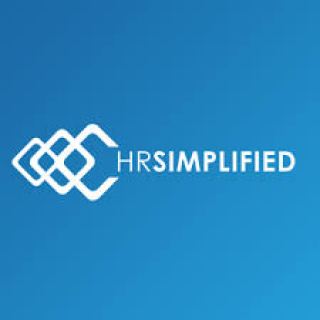Tunnel Vision? The effect of retrospective back pay awards
Labour law is not punitive in nature as compared to civil or criminal law. As a result, when Commissioners consider the facts argued at arbitration, their awards need to be fair and reasonable. Careful deliberation needs to be made not to overstep their powers.
In general, a claim for damages can be instituted for reputational, medical, actual and patrimonial harm, to name a few. However, in labour law, the primary relief claimed by an aggrieved party is reinstatement. Reinstatement can be with or without back pay for the months the former employee was unemployed, particularly if the dismissal is found to be both substantively and procedurally unfair. What needs to be taken into consideration is the reasonability of the award, which we will examine as per the case law below.
In a recent judgment of Maroveke v Talane N.O and others (2021) JOL 50670 (CC), the Court had to determine the appropriateness of the back pay awarded to an employee whose dismissal had been declared unfair. Maroveke (the "applicant") was employed as an artisan and mine technician by Fermel (Pty) Limited, a company that provides technical services to mining companies. The Applicant commenced his employment on the 15th of October 2007. On the 25th of June 2009, the Applicant received a distress signal to attend to a breakdown in a mine. He was with a colleague when he drove a company vehicle through an underground tunnel. The company vehicle sank as the vehicle could not withstand the depth of water, and the Applicant was unable to drive it out. As a result, the engine failed. Later that day, the vehicle was towed to the workshop. One of the officials, namely Engelbrecht, had concluded that the Applicant was responsible for the damage to the vehicle and further told him that the cost of the repairs would be approximately R100 000. Engelbrecht produced a loan form for the amount and instructed the Applicant to sign it. The Applicant refused and demanded that the engine be inspected. He also sought a report setting out the extent and calculations of the damage. The Applicant was informed that due to his refusal to sign the document, he would be charged for misconduct and subjected to a disciplinary hearing. On the 6th of July 2009, a disciplinary hearing was held and he was found guilty on the basis that the applicant "could have foreseen that there could be potential damage to the vehicle after he drove it into the water". An expert report regarding the damage to the vehicle was not presented during the hearing, nor was a copy given to the Applicant. The Applicant was also not afforded an opportunity to deal with the report during his evidence. The chairperson of the hearing, however, considered the report during the determination of an appropriate sanction. On the 16th of July 2009, the Applicant was dismissed. The Applicant secured employment two months after his dismissal.
The matter was referred to the CCMA as an unfair dismissal dispute whereby the Commission viewed the Applicant's dismissal as both procedurally and substantively unfair on the basis that the damage report was not provided to the Applicant. As a result, the Commissioner awarded reinstatement. The company took the award on review to the Labour Court. The Labour Court held that the Commissioner's decision was fatally flawed and set aside the award and replaced it by stating that the Applicant's dismissal was procedurally and substantively fair.
The Applicant referred the matter on appeal to the Labour Appeal Court, which then found that not all evidence that was before the CCMA was before the Labour Court and decided to set the Labour Court's decision aside and remitted the matter back to the CCMA to be heard afresh by a new Commissioner.
On the 14th of October 2014, the matter came before a new Commissioner at the CCMA who held that the Applicant had, under the circumstances, acted as a reasonable driver and maintained his conduct in terms of the company policy. Therefore, negligence for the charge of misconduct had not been established. The Commissioner concluded that the employer had failed to prove the misconduct and accordingly held that the dismissal was substantively unfair. The Commissioner issued an award of reinstatement retrospectively from the 1st of November 2013 with back pay equivalent to 12 months' remuneration.
The Applicant applied for a variation of the award. This was on the basis that the back pay as per the award was calculated on the same scale from the date of employment to the date of the arbitration award. This was acceded to by the Commissioner. Thus, the back pay due to the Applicant increased from R135 536.28 to R469 256.88. The company took the award on review to the Labour Court, which agreed with the Commissioner's view that the dismissal was substantively unfair and that the order for reinstatement was appropriate.
Important to note, however, is that the Labour Court did not concur with the order for 12 months retrospective back pay. The Court further stated that in keeping with the established principle that reinstatement ought to neither impoverish nor enrich the employee but restore them to the position they would have been in, but for the dismissal. In this case, the employee was only unemployed for two months until he gained employment, and therefore, the retrospectivity was indeed unreasonable in the circumstances. The Labour Court set aside the CCMA award and replaced it with an order reinstating the Applicant with effect from the 14th of October 2014, being the date of the arbitration award, with back pay equivalent to two months' wages. The Applicant took the Labour Court's decision on appeal. The Labour Appeal Court, however, dismissed his application for leave to appeal.
The matter was taken by the Applicant on appeal to the Constitutional Court ("CC"), claiming an element of infringement of the right to fair labour practices. The CC considered the order by the LC and had a distinct issue with the portion of the order for retrospective back pay. The CC held that in restoring the Applicant to his previous position, this Court ought to have considered both the amount he would have earned but for his dismissal and what he earned while working at Gold Fields. As far as this is concerned, the Labour Court did not set out the facts it considered in terms of the Applicant's earnings. It was only alluded to from written submissions that the CC requested from parties that the Applicant earned considerably lower wages at the new employer than what he earned at the time of his dismissal.
The CC considered whilst employed by the previous employer, the Applicant earned R24 730.60 per month. At Gold Fields (new employer), he earned R15 000.00 per month. The difference between the salaries is R9 730.60 per month. This would mean that the total difference in earnings for the period of 10 months is R97 306. In the Court's view, the Applicant's diligence and good fortune in finding employment should not prejudice him from receiving what is due to him.
The Applicant was entitled to payment of R49 461.20, which was two months' back pay, and R97 306, being the total difference between what he earned whilst in the third respondent's employ and his earnings at Gold Fields for the period of 10 months. This means that the Labour Court had to set the order aside and replaced it with an order that the third respondent should pay the Applicant an amount of R146 767.20.
In conclusion, the Constitutional Court held that the Labour Court should have taken the salary difference into account when determining the back pay. Retrospective back pay should not be viewed through a ‘tunnel’ but rather seen from all angles in order to have reasonable and fair outcomes.
Article by:
Natasha Govender
Natasha is a Dispute Resolution Official and Collective Bargaining Co-ordinator for the Consolidated Employers Organisation (CEO SA)
3 ways Psychometric Assessments can assist with Effective Succession Plan Strategies
It is not a surprise that the main failure of family businesses is succession planning, with only 17 percent of family entities having a succession plan in place. The moment of transition from one generation to the next is a huge fault line of this business model. There is no point in having detailed plans for business continuity if the single most significant risk is not addressed. There may well be a strong pipeline of potential next-generation leadership, but with no formal succession plan in place, internal family conflict may undermine future growth, profitability and ultimately the existence of the business.
What companies such as McCain Foods and Pick n Pay have in common is that both successful businesses came from humble beginnings and were first and foremost family businesses.
In today’s fast-paced and competitive business environment businesses require top-notch leadership teams that have a deep understanding of disruptive technologies, dynamic workplace changes, and potential disruptors of their company’s business model. Building such high performing teams is a challenge when there is no formal succession plan in place.
So, how can businesses manage succession planning more effectively?
The answer lies in HR’s ability to identify high potential employees and individuals and groom them to meet requirements of senior roles.Psychometric Assessments are a key enabler in helping HR identify leadership potential and move employees from individual contributor to leadership positions. When used effectively, these tools can help identify and rank high potential candidates.
Here are three ways you can leverage assessments for effective career planning and succession mapping:
No. 1: Identify high performers
Senior leadership roles require a complex range of skills, abilities and traits. Assessing behavioural competencies, cognitive and critical thinking abilities and role expertise can provide a comprehensive view of potential leaders’ capabilities and gaps. Assessments can help you determine if an individual has the necessary expertise and their ability to deal with pressures and stress and carry out long-term planning.
No. 2: Build leadership skills
Psychometric assessment tools are useful in exploring an individual’s leadership style and identifying the work personality required for complex leadership roles. Based on the results of the assessment, you can deploy the right learning modules for reskilling and up skilling to close the identified gaps, and equip them for leadership success.
No. 3: Match mentor and mentees
Mentoring, when done right, can accelerate leadership development and readiness. But the success of mentorship program depends on the mentor-mentee relationship. Assessment tools are great way to analyze the skill and intention gap, and build a mentorship program that is aligned with business succession goals and individual development. Such initiatives not only help create a highly engaged workforce but also pair high potential managers with the board of directors and managing partners for on-the-job training.
At a time when building a talent rich business is pivotal to success, companies with assessment-backed succession planning are better placed to objectively rank employees for senior positions according to job-specific qualifications, behavioural competencies and current job performance.
The result: an enhanced ability to map future leadership needs and build a leadership team that has the right combination of skill sets, backgrounds, experiences and perspectives for running a successful enterprise.
Tips for running a successful YES program
Author: Samantha Metcalfe, Problem-Solver Decusatio
The Youth Employment Service (YES) B-BBEE incentive has been one of the most powerful job creation incentives out of the Department of Trade, Industry and Competition (DTIC) and apart from helping businesses move a full 1 or 2 levels on their B-BBEE scorecard, I believe it has played a material part in mitigating some of the impact of COVID-19.
This quote from one of our YES youth highlights just how critical this incentive is for the country:
“It feels so good to finally help out at home and give my mom a break from some things. It’s not easy raising 5 kids as an unemployed widow.”
We run YES programs on behalf of clients and we have had some interesting learnings over the last 12 months in terms of how to ensure you get maximum benefit out of these programs.
Tip #1: Understand the rules of the incentive.YES is one of the simplest B-BBEE incentives out there – just understand the rules and how it works so that you don’t invest in a program and then lose the investment because you didn’t set it up correctly.
Tip #2: Recruit carefully.Think about the program you are building and running and recruit for that. It makes no sense to hire an ambitious youth with a degree if they are going to be doing manual tasks. Understand their motivation and home life situations to work out whether they will be a good fit for your program.
Tip #3: Give them meaningful work.It sounds obvious but if the youth don’t have a purpose and feel like you’re inventing a job for them, then they will pick up on this. If you can’t create the work inside of your organization, you can work with a partner who can build a project that will have social impact. Everybody wants to feel valued – don’t simply leave them in a situation where they are unattended with no purpose.
Tip #4: Salaries.Just because you can pay the National Minimum Wage doesn’t mean you should. Drop-offs are a very real challenge amongst youth employment initiatives and while it might be attractive on a spreadsheet to get a youth with a degree working for you for R3760 per month, you will have high drop-offs and replacement costs. We found it worked better when we sourced additional funding for the youth or paid top-ups / commissions on their salaries.
Tip #5: Skills. Skills. Skills.One of the reasons businesses shy away from doing youth employment is the time that it takes to get youth upskilled. Simple things like soft-skills around answering the phone or basic Microsoft skills are often taken for granted. Our youth have been able to do Xero accounting, Sales Skills, Public-speaking programs, 21st century design learning and Udemy courses that they can put on their CVs.
Don’t lose sight of the fact that you are aiming to give the youth a CV that will make them more employable at the end of the 12-month experience.
Tip #6: Celebrate their successes and gamify the program.You’ll be astounded at how hard the job search is for youth with no employment history. Many of them spend years knocking on doors trying to find a starting point and rejection has become a big part of the job search. Spend a little extra time celebrating their successes and encouraging them to pick up new skills along the way, post their achievements and work output on platforms like LinkedIn – it creates a sense of belonging and achievement.
Tip #7: Data and airtime.It’s a simple cost but giving youth access to data and airtime will be a big drawcard, particularly in environments where Covid-19 restricts access to fixed office environments.
Tip #8: The Supervisor is not necessarily "the Boss".When you are uploading youth into the system, you will be asked to nominate a supervisor for the program. We feel that the supervisor should not be the person who manages them on a day-to-day basis. Rather, the supervisor should be an empathetic ear who will help them navigate their 12-month work experience.
Tip #9: Set milestones for retention.Remember that the goal is to get the youth over the 8-month mark so you don’t need to incur replacement costs.
By setting milestones including the opportunity to do skills programs, get a salary increase or other incentives, you can ensure that you don’t incur replacement costs down the line. While everybody wants to run programs as affordably as possible, longer-term planning means that the youth don’t look around for other opportunities.
Tip #10: Discuss their futures and absorption opportunities.The absorption requirements for YES cohorts is very low at 2.5% or 5% [depending on which level you are looking to achieve] and many organisations treat this as an after-thought. We found youth who couldn’t see a future career path or opportunity were quick to drop off the program. Communicate opportunities and they view it in a different light.
In summary, YES is a very powerful incentive which can be used as part of your B-BBEE strategy if you plan it correctly… but if you fail to plan, you will plan to fail.
Samantha Metcalfe is a Problem-Solver at Decusatio, a consulting firm established to help entrepreneurs to tackle the twin challenges of Access to Finance and Access To Markets. She can be contacted on This email address is being protected from spambots. You need JavaScript enabled to view it.
NEW SIMPLE HR SOLUTION SET TO TRANSFORM SA SMALL BUSINESS
TIGHTER HR COMPLIANCE AND LESS HASSLE FOR LESS COST STELLENBOSCH, 14 November 2019 — Leading Stellenbosch based Data Management and Small Business Solutions Experts, DataSimplfied are pleased to announce the launch of their powerful and easy to use small business HR management solution HRSimplified in South Africa.
Developed over 2 years in response to calls from small businesses for an extremely simple yet highly functional HR Management Solution where little or no HR Management expertise is required, HR Simplified empowers and enables small businesses through easy to use, powerful and affordable technology.
“HRSimplified is a transformational HR Solution that encourages small businesses to adopt technology for everyday business use” explains DataSimplified MD, Michael Hamilton “The system is logical and easy to use, designed to simplify HR, improve compliance and add to the bottom line of any small businesses by automating manual, paper-based processes and increasing overall productivity levels”
HRSimplified is focused on addressing the needs of small businesses with up to 100 employees including start-ups and established companies. Key industry sectors have been identified where there is a need for transformation through the use of smart technology, where there is limited HR expertise and where HR Management and Regulatory Compliance is challenging and time-consuming. “Detailed analysis of the small Business market in South Africa broadly identifies our market as: Agriculture, Construction, Automotive, Small Engineering and Retail” Hamilton explains “HRsimplified is priced in a manner that makes it extremely affordable for these sectors and the solution addresses key challenges each faces” he continues.
The HRsimplified solution is continually being developed and improved with the existing products basic and basic plus starting at just R15 per month per employee. A Payroll component is due for release in January 2020 that is expected to see HRSimplified disrupt the Small Business HR Management sector considerably. A growing list of Partners and demand for the technology behind the solution from the UK, New Zealand, Australia, Canada and Singapore is set to position this well-developed and intuitive DataSimplified solution firmly on the map. With plans to bundle the technology with other DataSimplified solutions such as SocialSimplified and with its already available integration to leading small business solutions such as Xero Accounting, Sage One, Zoho and Hubspot, HRSimplified expects rapid adoption in the South African, African and global market in the next 6 to 12 months.
An official launch event across Cape Town, Durban and Johannesburg is planned for Q1 2020 – dates and partners to regulatory compliance shortly.
For further solution information contact Mike Hamilton, MD DataSimplified ( 082 498 3254 )or for press and media information contact Matt Newnham (081 708 2166) or visit www.hrsimplified.co.za or www.datasimplified.co.za
Career risk mitigation – the way to go for corporate high flyers
Career risk mitigation – the way to go for corporate high flyers by Michelle Moss* (Signium Africa: www.signium.co.za) 2019 Obsolescence. It happened to VCRs. It also happens to executives, even high flyers; especially the tunnel-vision variety that obsess about the job on hand.
Obsolescence no longer takes decades. It can happen at pace as technologies change and businesses react to new legislation, heightened competition and more demanding customers. Forward-thinking executives increasingly realise they have to be fit for purpose today and in five years’ time. Obsolescence is a career risk and like any risk can be managed by putting proper mitigation strategies in place.
Talent search and management companies – so-called corporate head-hunters – face increasing calls from individuals for a heads-up on changing competency requirements. Often, the request comes from the mid-life CEO, the high achiever who took a leadership role aged 45 and is determined to be in place (or to have moved on to bigger and better things) by the time he or she is 55. Competency-focused future-spotting is driven by the desire to mitigate the risk of a stalled career. However, parameters widen almost immediately.
Reference to relevant literature like the World Economic Forum’s ‘Future of Jobs Report 2018’ and the work of the MIT Initiative on the Digital Economy indicate that personal competencies are inextricably linked to the corporate future. The business or industry vision invariably shapes the personal quest for continuing relevance by individual executives.
A global player like Riverwaves (a world leader in bespoke competency-based HR solutions) is close to these developments. Alexandra Pascu, Riverwaves’ GM - Middle East and Africa, notes: “Customised competency models drive business strategy while delivering benefits across the board - at individual, HR department and organisational levels.”
According to studies on the statistical validation of competency models**, the tangible return on investment includes a 63% reduction in staff turnover through increased employee satisfaction (attributable to greater clarity on performance expectations), a 19% improvement in employee performance and a 12.5% rise in sales and profits (a by-product of competency-based training). Adoption of a bespoke competency model enables organisational vision and values to be translated into employee behaviour.
According to Pascu, the corporate embrace of competency modelling has been accompanied by a global increase in demand for in-house competency training for line managers and talent professionals. So, we see shared focus on future-ready skills by both the organisation and its people (including those in the C-suite).
Individuals looking to avoid personal obsolescence increasingly find themselves working in a de facto partnership with organisations that are just as eager to stay current and relevant. The result doesn’t have to lead to a total immersion in new technologies. We may find ourselves working alongside robots and co-bots while dealing with digitisation and artificial intelligence, but very human attributes will make us special and keep us on top.
The World Economic Forum believes workforces will become even more diverse (multi-racial, multi-cultural and multi-generational with greater female representation). Orchestrating the input of ‘gig’ workers, freelancers, short-term project teams and consultants will be vital as structures become more flexible. Such scenarios help explain a quick competency to-do list suggested by MIT’s Erik Brynjolfssons. He advises us to put our focus on: o Creativity o Emotional intelligence (interpersonal skills, teamwork and leadership) o Passion for our work Apparently, love never goes out of style.
Not even love for what you do.
-- ENDS --
*Michelle Moss is a Director at Signium Africa (previously Talent Africa), a leading South African-based executive search and talent management company servicing sub-Saharan Africa. www.signium.co.za **Meta-analysis study reported in “The economic value of emotional intelligence competencies and EIC-based HR programmes”, Lyle Spencer. In Cherniss, C. and Goleman, D. eds. The Emotionally Intelligent Workplace: How to Select for, Measure, and Improve Emotional Intelligence in Individuals, Groups and Organisations. San Francisco, CA: Jossey-Bass/Wiley 2001. Spencer, Lyle, “Competency Model Statistical Validation and Business Case Development.”www.inscopecorp.com/resources-papers-statistics.aspx, 2004.
Website: www.signium.co.za Tel: +27 11 771 4800 Issued By: Tale Spin Media & Marketing Zelda Williams 082 461 0689 or Gillian Schmid 082 960 3233 This email address is being protected from spambots. You need JavaScript enabled to view it. This email address is being protected from spambots. You need JavaScript enabled to view it.
Corporate narcissism… SA’s secret curse - By Annelize van Rensburg (Signium Africa)
Corporate narcissism…SA’s secret curse - By Annelize van Rensburg* (www.signium.co.za)
It is the unspoken curse stalking corporate South Africa. Few people talk about it but many executives encounter it and may be vaguely – or acutely – aware of the danger to organisations and careers. The potentially toxic issue is corporate narcissism and its personification, the corporate narcissist. Psychologists, consultants and corporate head-hunters have been aware of the issue for many years, though it came into sharp focus internationally following the 2008 financial crisis as the egotism of some business leaders may have paved the way to the Great Recession. Specialists describe corporate narcissism as a corporate culture characterised by excessive pride, leading to destructive behaviour and strategies that boost personal egos rather than a company’s long-term prospects. It is often found in large firms, especially those with clear hierarchies as corporate narcissists favour structures that support their power and protect their position. One chartered psychologist notes negative correlation with honesty and humility, yet positive correlation with openness and extroversion. Translation? A corporate narcissist initially appears charming and open. He or she makes a great first impression and exploits it to win high ratings for performance. Sometimes performance can be impressive, but narcissists are likely to ride early successes for all they are worth to secure personal advantage. Narcissists steal credit for the work of others and minimise the contribution of subordinates. Narcissists are manipulative and enjoy the trappings of success … the best office, first-class travel and accommodation, luxury cars and celebrity lifestyle. A corporate narcissist may build a reputation as a stellar deal-maker and financial wizard. He (or she) is the corporate rain-maker with a knack for building a network of admirers and praise-singers. Peers and subordinates often do the real work while the manipulator hogs the limelight. Those with a different perspective are marginalised. Mistakes may be covered up and blame wrongly apportioned. Abuse and erosion of ethical values set in. Anyone challenging the narcissist is ostracised. An ace manipulator undermines the self-esteem of others.
Colleagues may find themselves working harder and harder as they are led to believe under-performance is their fault. Three consequences may manifest:
victims (frequently talented individuals) refuse to be victims any longer and quit, hurting organisational performance as staff turnover rockets victims become depressed and demotivated (health and work suffer) victims become whistle-blowers as egotism may lead to mis-statements of fact, even fraud (though raising a red flag may initially do more harm to whistle-blowers than narcissists who supposedly do no wrong). The extent of the local challenge is not only apparent from anecdotal reports, but from feedback given by executives looking to leave seemingly successful organisations.
Upon close questioning, they reveal the angst, anger and frustration of working alongside corporate narcissists in several sectors. There is some good news. International experience shows individuals can resist manipulation by setting clear boundaries and refusing to be sucked into the sycophantic culture that often surrounds a narcissist. You can’t change narcissists, but you can change your reaction to them by refusing to do their jobs or cover for them. Corporate scandals and persistent organisational under-performance are also beginning to alert boards to risks posed by corporate narcissism. Well-informed boards know self-confidence is good, self-absorption bad. With the help of skilled head-hunters, they are becoming better at spotting the difference. Taking a good hard look is a good start if we wish to combat the toxic effects of corporate narcissism. It then becomes possible to build cohesive teams that deliver good, consistent results without glory-hunting … or narcissism.
*Annelize van Rensburg is a director of Signium Africa (previously Talent Africa), a leading recruitment company based in South Africa offering executive head-hunting and leadership consulting - servicing sub-Saharan Africa. www.signium.co.za
Business success is a journey - Leadership is the compass
By Annelize van Rensburg, director at Signium Africa www.signium.co.za
Leadership identification and development continues to be one of the most pressing business issues keeping executives awake at night. Every business has the same aim: success and sustainability. Established routes to this destination include competitive advantage, new technology to improve productivity and product innovation, and cost reduction to secure pricing efficiencies. Without superior leaders, none of this is possible.Companies progress through a life cycle from seed to start-up, growth to established, expansion to mature, and then to decline and exit, or renewal through invention.
In the same way, leadership identification and development progresses through a cycle.Leadership consulting offers the most suitable answers to these current dilemmas by helping leaders to align their people strategy with their business strategy; providing scientific and objective information through assessments; designing development interventions to help leaders function at their highest potential; and then embarking on acquiring and retaining leadership talent when talent needs to be acquired and not ‘home-grown’.In order to remain competitive and relevant, business leaders must start by aligning their talent strategy with their business strategy. This is critical because talent strategies translate the company’s vision and values into expected employee behaviour and define how they will contribute towards the company’s success. Misalignment is likely to result in strategic goals not being met.
It is a myth that only large organisations need a talent strategy. Smaller organisations are more at risk because there are fewer possible successors in unique roles.In addition, not only is it important to understand the current talent pool within the company but also future needs. This is done by analysing the readiness of the current leaders to meet the future business needs of the organisation and provides a realistic pipeline of leadership talent.Plan your talent for five years from now and not only for today; look to the future of the company. Use competency assessments to test employees’ long-term strategic thinking ability, innovation, as well as their flexibility in decision-making, because these are critical skills for building a successful business.Assessments are an objective and scientific way of gathering insight into a person’s current functioning and future potential. They provide an understanding of the impact of the person’s behaviour on others in the workplace.
If the assessment tools used are valid, reliable and culture-fair, and if assessments are professionally conducted, the insights are extremely useful.Most leaders are built, not born. Top performers take responsibility for developing their knowledge, skills and competencies. There are many ways of doing this, including leadership development programmes, on-the-job training and executive coaching, which is a powerful way to provide support to leaders and help them navigate current and future challenges.
Executive coaching can help turn good leaders into great ones.If leaders within the company are not yet ready or fully developed, leadership needs to be acquired, preferably with the assistance of a reputable headhunter or talent-search professional for those executive level positions.That suitable candidates can be found from outside the company’s industry is beyond doubt; they may even have an advantage over industry insiders.
Their advantage is the ability to ask embarrassing questions while taking nothing for granted. Successful cross-industry movers acknowledge that their first job is to listen, then listen some more. The reinvigorated executive team around the new leader stops making assumptions and starts to question old habits. They may also acknowledge that new technology, new legislation and the emergence of a new consumer are having major impact on their sector. There are no guarantees of success, however. Outsiders don’t always work miracles.Pros are accompanied by cons.
The ‘safe’ industry insider does not have to go through a period of intensive familiarisation with a new industry and its dynamics. He or she can hit the ground running. In contrast, the outsider faces a steep learning curve. Suddenly, evolution seems safer than revolution. Continuity seems a better bet than a thorough shake-up.Stay open-minded.When recruiting leaders, don’t ignore the importance of diversity to balance your team. Remember generation, gender, race, religion and so forth. Businesses with diverse workforces will have a strategic advantage in the marketplace.It is difficult to attract executive talent. It is easy to lose executive talent.Offering opportunities to grow and giving leaders room to express themselves remain key to executive retention.
This is according to Michelle Moss, director of Leadership Assessment Consulting at Signium Africa.There are also other ways business leaders can meet their employees’ needs and foster employee satisfaction to support retention.Give them the permission to dream up new ideas and different ways of doing things. Of course, the boss still needs to keep a bird’s eye view of what is going on and provide advice and guidance whenever necessary to ensure ultimate success.Make work meaningful because most employees want to identify with the vision, the mission and the goals of the company they work for. As business leader, make sure that these are communicated often and that all leaders walk the talk.
Pay your employees what they are worth. Reward and recognition is still critically important in the workplace. A fair trade is important to most people.Business success is a journey, leadership is the compass. Leaders should develop talent strategies for the right reasons, and not just to tick a compliance box. It is worthwhile remembering that we are dealing with individuals who should be esteemed in the workplace.
A leader is a dealer in hope – Napoleon Bonaparte.
* Annelize van Rensburg is a founder and director of Signium Africa, previously Talent Africa, a leading provider of integrated talent solutions and leadership development in sub-Saharan Africa, e-mail: This email address is being protected from spambots. You need JavaScript enabled to view it.
What to do when integrity may get you fired?
What to do when … Integrity may get you fired
By Auguste Coetzer*, Director at Signium Africa (www.signium.co.za)
Rising levels of perceived corruption have sharpened the ethical challenge for those in responsible positions. When the spoils might run into billions, it seems you can be fired for doing the right thing and rewarded for doing what you know to be wrong. How do you stay on the side of the angels, stay in your job … and stay out of jail? The issue receives growing attention. The PwC study, Strategy & Recent CEO Success notes an international rise in ethical lapses and subsequent dismissals at senior level. It attributes the uptick to public outrage at corporate scandals, social media as a platform for experience-sharing and a 24/7 news cycle that makes any cover-up highly problematic.
The topic is also examined by author Ira Chaleef in his book, Intelligent Disobedience: Doing Right When What You’re Told to Do Is Wrong. Intelligent Disobedience indicates the impossibility of being only slightly dirty. You might object to an unethical practice and go along reluctantly, but your ethical lapse can still land you in jail. So, do you simply resign in protest and walk away? Sometimes, this is the only thing to do. You might then go public and become a whistle-blower – with huge personal consequences if you are labelled a ‘trouble-maker’. This is not always a wise move, and is often not necessary.
In a small market like South Africa, industry peers, professionals and specialists in executive recruitment are usually aware of the organisations where leadership is flawed and irregularities are apt to occur. Quitting an operation like this – or being fired for taking an ethical stand – holds no stigma. Your career will often resume an upward trajectory after an initial bump or two. In many cases, however, the issues are not nearly so clear cut. The organisation might decide on suspension rather than dismissal. You can then be pressured to go quietly. In South Africa, there have been cases where senior personnel have been suspended for years, leaving them and their careers in limbo. With this in mind, it may be advisable to avoid an outright rift in the event of unethical demands. Intelligent Disobedience suggests four techniques: Obvious shock. By your tone and facial expression indicate the request has taken you aback. Don’t give an outright refusal (yet). Your demeanour may be enough to prompt a rethink.
The boss or board may backtrack and subsequently abandon the idea without losing face. Seek clarification. Ask ‘Did I understand you correctly? Do you really want me to do this?’ You might even ask for the instruction to be put in writing. (For your own part, never sign any documents sanctioning unethical practices. This puts you in the cross-hairs while guilty parties stay camoflaged.) Suggest a better alternative. There may be a chance other, less dubious, steps could be taken and deliver a positive outcome. Emphasise self-preservation. Use expressions that enable a superior to retreat. Say, ‘This could make us look bad if this comes’ rather than ‘You will look bad.’ Point out that in the social media era, dirty secrets always come out eventually and this will not look good for ‘us’. But, at the end of the day, remember there are worse things than quitting a job or being fired from it … for instance, going to prison.
*Auguste Coetzer is a Director of Signium Africa (previously Talent Africa), a leading South African-based executive search and talent management company servicing sub-Saharan Africa.
The best defence against corporate failure...Individual Integrity
The best defence against corporate failure … Individual integrity By Auguste Coetzer* and J. Michael Judin**
Integrity has no expiry date. You’ve either got it or you haven’t. An honest, diligent company director does not become a crook on the make the moment some arbitrary term limit has been exceeded.
This states the obvious. However, current pressures in the realm of corporate governance and audit practice suggest now’s a good time to remind ourselves of basic principles in the conduct of business and the behaviour of directors. Inevitably, the implosion of the Steinhoff retail group and revelations about the role of Gupta-linked companies in state capture have raised questions about the ability of current regulation – specifically the King IV guidelines – to combat wrongdoing and sharp practice. The focus has fallen on the tenure of directors and audit firms. Long-term appointments supposedly contribute to cosy relationships and an ‘old boys’ club mentality’, allegedly compromising professional scepticism and rigorous scrutiny of corporate actions and accounts.
The supposed solution is frequent rotation of independent non-executive directors and audit firms. Pressure appears to be growing to get old faces out and new faces in. Momentum is such that it is almost certain mandatory audit firm rotation (MAFR) will be legislated locally while the definition of independence may be revisited, perhaps resulting in the automatic lapsing of independent status after nine years (on the British model). Currently, under section 92 of the Companies Act, audit partner rotation is mandatory in South Africa, not audit firm rotation, while King IV allows boards to exercise their judgment when an independent non-executive director appears to offend any of the criteria for independence, as long as a board can justify its view that independence of judgment and action is unimpaired. This may change as those calling for further legislation punt the merits of regular rotation. In effect, the proponents of rotation play up the benefits of a shake-up while playing down the value of experience. The danger is that institutional memory and industry knowledge will be sacrificed with no assurance new perspectives will improve company performance or corporate governance. Past errors might be repeated, incurring unnecessary costs while endangering competitive advantage and jobs.
Experience has traditionally been regarded as a key component of wisdom and a precondition for forward planning. Confucius tells us ‘By three methods we may learn wisdom: First, by reflection, which is noblest; Second, by imitation, which is easiest; and Third, by experience, which is the bitterest’. Of course, experience at the highest level – in the boardroom – is especially hard won. It should be noted that experience is still being gathered with MAFR. This state of flux has not impeded the global trend to mandatory rotation.
The EU has introduced MAFR, with a 10-year cap on client-auditor tenure. Brazil has a five-year cap, as does China (for banks and SOEs) while the UK prefers a 10-year limit. Yet a growing body of research suggests presumed benefits cannot be substantiated and the risks of auditing failure are higher in the early years of a relationship; undercutting arguments about complacency setting in over time. The efficacy of rotation as a defence against fraud is also open to question. MAFR was in place in Italy years before the Parmalat scandal, but was no defence against frauds so massive they rocked the country. Sometimes doubt sets in after prolonged trial. For example, Spain embraced the concept for several years, then dropped it. Research continues and real-life experience is still being gathered. However, arguments in favour of a wait-and-see approach appear to have lost ground to growing agitation for regular rotation of audit firms and independent directors. The challenge for proponents and sceptics alike is how to make the best of these changes when they come.
Clearly, the known risks should be addressed; for instance, the danger that rotation will deplete industry knowledge and institutional memory. One suggestion here is that a phasing-in period be introduced. The established audit firm (or established directors) could remain on board while replacements learn the ropes and draw on the experience of their immediate predecessors. With corporate change on the near-term horizon, it is also appropriate to focus on challenges specific to South Africa; such as the need to strengthen boardroom diversity. Here, the phasing-in principle might be extended to include a mentorship period for newly appointed young directors. While welcoming a new generation of directors, it makes sense to confront a generational issue – low levels of digital literacy on ageing boards of directors. A McKinsey Quarterly article of 2016 noted that “only 116 directors on the boards of the Global 300 are digital directors”. Furthermore, two McKinsey surveys report that only 17% of directors say their boards are sponsoring digital initiatives while only 16% say they fully understand how industry dynamics are changing in the face of digital attack. Yet one in three directors believe digital disruptors will overturn their business models in the next five years.
In response, some US firms are setting up technology committees while hiring chief digital officers and appointing digital directors. South African companies face similar challenges, though board composition may not yet reflect their willingness to cross the digital divide. The geek with the knowledge and insight to save a traditional organisation from digital disaster is probably under-30 with a ring in his (or her) nose, and you don’t see many directors answering to that description in South African boardrooms. In all these rotational, mentorship, diversity and digital scenarios, we should acknowledge that a key issue is talent availability. South Africa’s skills pool is limited. The number of experienced, proven and respected individuals with sound directorial credentials is finite. We can legislate change, but we then have to find the people to make the changes work. Clearly, integrity and intellectual honesty are non-negotiable. They are the critical requirements of all contributors to company performance, whether newcomers to the boardroom or old hands A shake-up that weakens corporate governance must be avoided at all costs. Ethical leaders with strong values are the best guarantee that change is a change for the better.
*Auguste Coetzer is a Director of Signium Africa (previously Talent Africa), a leading South African-based executive search and talent management company servicing sub-Saharan Africa. www.signium.co.za
**J. Michael Judin is a partner in the Johannesburg law firm of Judin Combrinck Inc. www.elawnet.co.za Though he writes here in his personal capacity, he is on the King Committee, was part the task team that wrote King IV™ and chaired the subcommittee on the chapter dealing with negotiation, mediation and arbitration as contained in King III. He is a non-executive director of, and legal adviser to, the American Chamber of Commerce in South Africa and co-chairman of the Corporate Governance International Development Subcommittee of the American Bar Association’s business law section.
Break the corporate politics taboo and head for the top
By Michelle Moss*, Director at Signium Africa - www.signium.co.za
Politics was once a dirty word in business. You did not play politics to get ahead. It was just not done. Rubbish! Corporate politics have always been played.
The challenge is to play without deceit and duplicity while boosting the business. Of course, smart political players boost themselves as well.Currently, a corporate politics rethink is underway overseas. International literature confirms it.
A similar reassessment is underway in South Africa.Local indicators include executive search feedback to job candidates that their ‘political’ skills need attention and growing demand in the executive coaching arena for assistance with this aspect of personal development.Stalled careers are a key driver.Long hours and impressive gains should have resulted in career recognition but haven’t.
The individual then asks, ‘What more can I do?’The answer is ‘Learn to play the game’, and that game is corporate politics.
Many newcomers to the game are shamefaced about it.They confuse politics with ‘brown-nosing’ and manipulation.
They believe good people do not network for self-advantage.However, a good executive coach will point out that access, visibility and credibility are essential for personal and corporate success.Good ideas are useless unless they’re shared with decision-makers.
ccess to senior ranks is therefore essential. Once access is gained, the ambitious manager has to be seen as a credible performer making a visible difference.Credibility is rarely an issue. The go-getter usually has the qualifications and experience, has put in the time and achieved success.The challenge relates to access and visibility, but first mindsets must change.This is no problem for those who are aware their career has stalled and change is overdue.
Good coaches also point out that personal values are not compromised by networking and relationship-building. Behaviour might change, ethics remain intact.Behavioural change helps put a name to developments that were previously anonymous.Bosses are swamped by data. Often, they don’t have time to ask ‘who worked on this project?’ or ‘who led that team?
By changing behaviour and creating favourable awareness, players make it easier for superiors to remember a face and name.Once the mindset has been adjusted, it is necessary to identify decision-makers and influencers; external as well as internal. Impress some clients or suppliers and the word may go all the way to the top of your own organisation.Once identities have been established, relationships can be developed. Often, this is through participation in various initiatives or at certain social occasions.Take an interest. Get on to the invitation list.This can be difficult for introverts. They need to become more outgoing. Extroverts face a different challenge. They can come across as pushy and egotistical.One way forward is to tell a story that subtly conveys the contribution of the ambitious manager without bombast. There may be a humorous pay-off line, but the story-teller is positioned as a key actor.These techniques involve no play-acting. Superiors are not being deceived.
They are being alerted to interesting developments and the impact of new role-players.Advancement from this base can be impressive. Stalled careers may go into overdrive.Stellar success like this is not built on a lie. You have to be the real deal to make real progress. Play the political game to win recognition. But remember; real winners always deliver results.
*Michelle Moss is a Director at Signium Africa (previously Talent Africa), a leading South African-based executive search and talent management company servicing sub-Saharan Africa. www.signium.co.za











